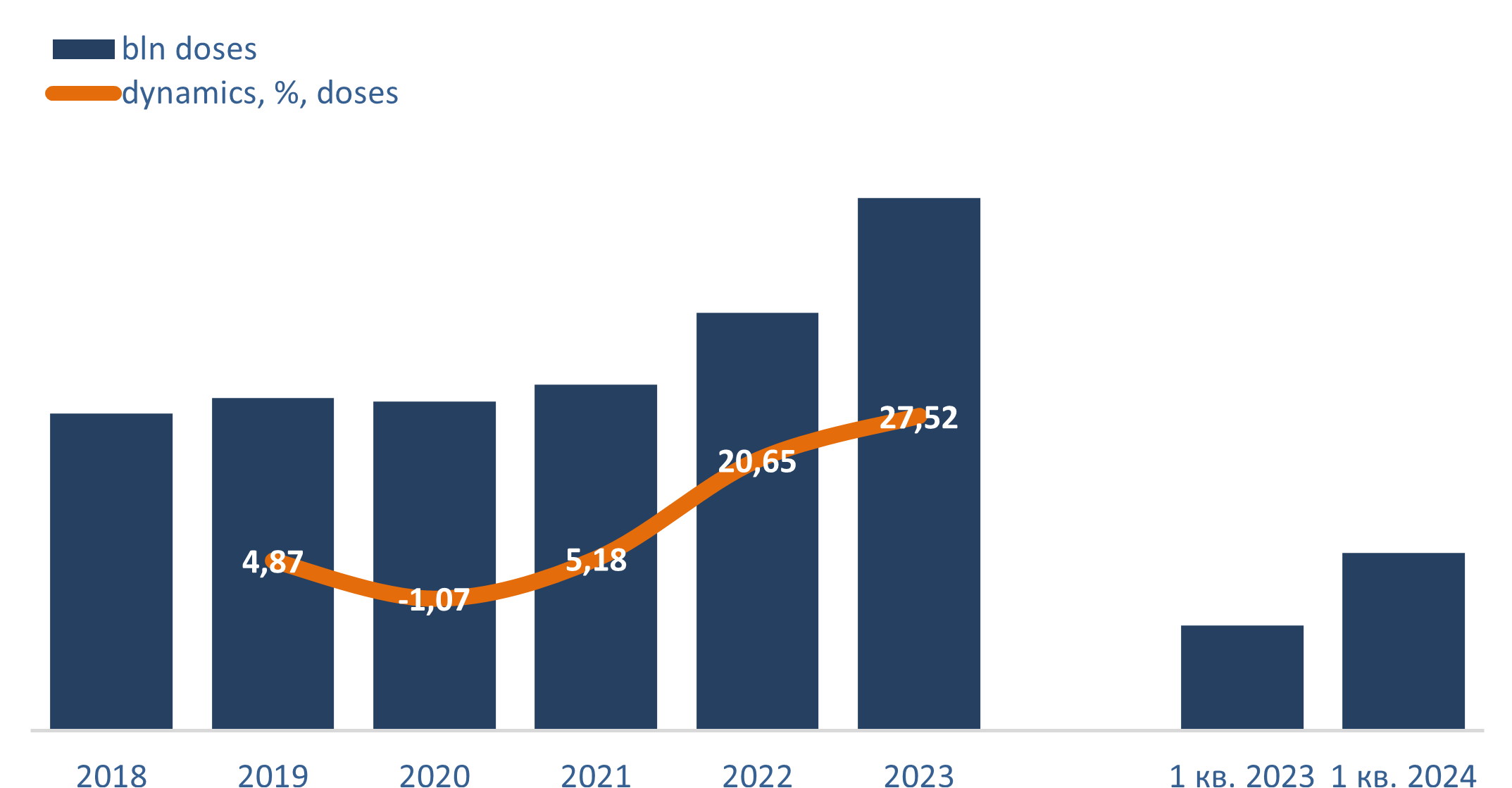Veterinary Vaccine Production in Russia (Q1 2024)
In 2023, Russia manufactured 21.04 billion doses of veterinary vaccines and anatoxins, up 27.5% from 2022. Manufacture fell just once in the past 5 years—by 1.1% in 2020. Since 2022, however, manufacture has been growing at a double-digit rate. In Q1 2024, 7.02 billion doses were manufactured against 4 billion in the same period in 2023—a record-high increase of 68.3%.
We estimate that total volumes in the Russian veterinary vaccine market, including imported goods, were 39.3 billion doses in 2023. Imported vaccines accounted for 18.3 billion doses, meaning that for the first time in five years, Russian-made vaccines accounted for more than half of the market—53.5%. In 2022, it was 43.2%, while it did not exceed 37.5% until 2021. Notably, this increase can be attributed to a larger manufacturing output, while imports were more or less the same until fall 2023. The consumption of imported vaccines peaked in 2019 at 27.7 billion doses, when Russia manufactured around 13.1 billion doses, accounting for only 32.2%, an all-time low.
March 2024 saw a three-month high output of 2.8 million doses of Russian-made vaccines, Rosstat reports. Back in 2023, manufacture peaked a little earlier in February, with 1.7 million doses. The Northwestern Federal District produced the largest number of veterinary vaccines in Q1 2024, accounting for more than 56%, Rosstat reports. An enterprise that specializes in vaccines for birds, Avivac, is located there. In Q1 2023, the Northwestern Federal District accounted for more than 75%. The Central Federal District manufactured 3 million doses in Q1 2024, accounting for 42.7%. The region’s enterprises include ARRIAH and Shchelkovo Biocombinat, as well as a number of other companies. The other regions account for very small shares (the North Caucasian FD 0.9%, the Volga FD 0.3%).
Growth rates of the manufacture of veterinary vaccines and anatoxins in Russia in 2018–2023 and Q1 2024

 Рус
Рус




